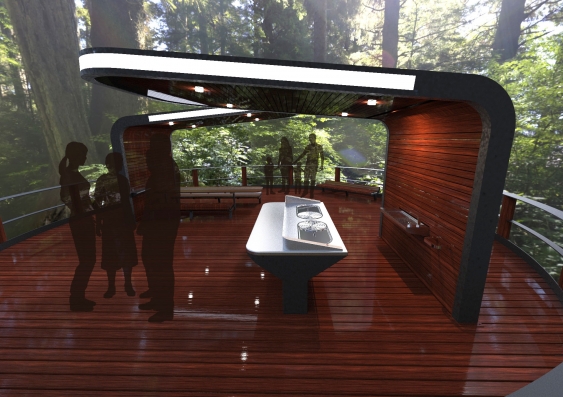Barbecues in our local parks need to change to reflect the diverse needs of our communities, says the Director of the Industrial Design program Dr Christian Tietz.
Boxing Day, birthdays and other significant cultural or religious celebrations - many of us gather in parks to mark special occasions with family and friends. Certain locations are coveted - picnickers arrive at the crack of dawn to claim a good spot for the day. Often, what makes it a 'good spot' is that it has a barbecue.
If we take a closer look at the typical public park, we see a design that represents an iconic Australian culinary institution - the barbie. The epitome of Aussie culture - think Crocodile Dundee and blokes in singlets and thongs clutching stubbies - it's a symbol of our relaxed outdoor lifestyle in the "Lucky Country". But that was yesterday.
Today the cultural landscape has changed and our population presents a richer, more colourful and more nuanced picture. And so does our food. Halal, kosher, vegetarian, raw, paleo, vegan, gluten-free and other diets, together with different styles of cooking, are now common.
Yet how do we cater for them outdoors? Most public parks offer only an electric barbecue accompanied by picnic settings a few metres away to prepare, cook and enjoy the food. This sort of facility now seems quaint and limited.
What do we want from a modern barbie?
So how could we improve the humble barbie? To answer that question, we need to think about why it's needed and how it's used. If it's a significant event, it's likely to involve special food - part of the celebration is preparing, cooking and eating the festive fare. This can be stressful for the host. There's the washing up, the cleaning, dealing with the rubbish, not to mention the risk of a big, boisterous gathering upsetting neighbours.
But moving from a well-equipped house and kitchen to the park doesn't solve all of the host's problems. For a start, a vital feature for hygienic food preparation - access to clean water - is often missing. When we offer barbecue facilities to the public, why don't we routinely provide a working tap, sink and drain?
Then, of course, there is the barbecue itself. Why, over all these years, has the barbie not evolved? Most current iterations still look institutional and outdated.
Student-designed barbies for multicultural cooking
A few years ago, Faculty of Built Environment senior lecturer Dr Christian Tietz invited Industrial Design students to bring the barbie into today's world.
"We challenged students by briefing them to design public barbecues that encourage social interaction, sustainability and different styles of cooking, like Asian, kosher, vegetarian and halal."
The students were also encouraged to include smart technologies, apps, induction heating and recycled materials in their designs.
Marc Abbott worked with fellow students Yijia Zhang, James Perry, Will Andrews and Rong Pan to design a 'complete outdoor cooking experience' for the proposed nature walk in Kogarah's Carss Park.
Insel - meaning 'island' in German - is an elevated barbecue facility that juts out over the park's marshlands. The wooden panelled structure is solar powered and houses a galvanised steel barbecue and wooden tables and benches. An LED display around the roof allows personalised messages to be displayed for birthdays and celebrations, and lights up to let park-users know when barbecues are available.

Insel, meaning 'island' in German, is an elevated barbeque facility designed to jut out over the marshlands in Kogarah's Carss Park.
"Our aim was to create a unique enclave, where families and friends can gather with all the required facilities in reach, but still be embedded in nature," says Abbott. "We also focused on an inclusive design by making sure the barbecue was wheelchair-friendly and we provided segmented cooktops to cater to different dietary needs and cooking styles."
Ibrahim Diaz and his team Jeremy Hizkia, Josephine Wilandouw, Li Chenming and Faye Chen designed an outdoor cooking facility for Arthur Byrne Reserve at Maroubra Beach.
Cosea is a modern, powder-coated steel structure with a barbecue, sink, tables, benches and a surfboard rack. It also incorporates power outlets for electrical cooking, USB charging ports and LED lights that automatically turn on for night time cooking.

Cosea. Photo: Supplied.
"Our team vision was to provide the best social outdoor experience at Maroubra Beach," Diaz says. "Cooking, washing and disposing of waste properly is what every barbecue in Sydney should do and is what Cosea is all about."
Dr Tietz says innovative product design solutions can service culturally and socially diverse users, which includes catering for public food preparation and consumption.
"Developing outdoor facilities, similar to an informal outdoor common room, can extend the domestic realm. We should be aiming for an amenity that allows us to carry out quasi-domestic activities and have access to utilities in public.
"And creating a healthier and more liveable urban environment helps residents engage with each other, which in turn fosters a shared sense of belonging, trust and well-being."
This is an edited version of an article by Dr Christian Tietz (Director of the Industrial Design program, Faculty of Built Environment) previously published on the UNSW Newsroom.






